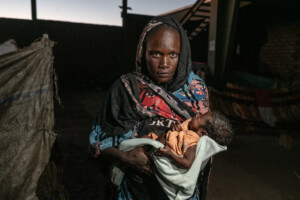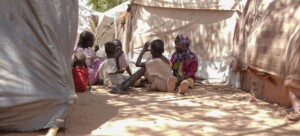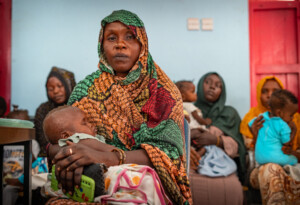Storms and rain in Sudan leave 122 dead, more than 123,420 feddans of crops destroyed
122 people have died in floods in Sudan since the beginning of August, prompting the National Council for Civil Defence to supply relief to most affected areas.
 The Dams Department built 12 dams in Khartoum North and Omdurman to protect the areas from flash floods (SUNA)
The Dams Department built 12 dams in Khartoum North and Omdurman to protect the areas from flash floods (SUNA)
122 people have died in floods in Sudan since the beginning of August, prompting the National Council for Civil Defence to supply relief to most affected areas.
The Council reported yesterday that 122 people have died and 115 others have been injured in Sudan up to September 4 by ongoing torrential rains and flooding. Several them were killed by collapsing buildings, lightning, and scorpion stings. In total, 34,944 houses have been destroyed and 49,096 damaged. The Council also recorded the loss of 123,420 feddans of crops and 2,406 livestock.
Tents, mosquito nets, blankets, tarpaulins, pumps, water tanks, boats, sacks to fill with sand to build dykes, and drilling equipment have been provided to the affected areas.
On Friday, medical sources in El Managil in El Gezira reported cases of gastroenteritis and acute watery diarrhoea following torrential rains and floods. The number of cases is not yet known, but no reports of epidemics has been recorded so far.
In its latest update, the United Nations Office for Humanitarian Affairs (OCHA) in Sudan said the number of people affected by flooding across the whole of Sudan stands at about 278,559. The states with the highest number of people affected by the flooding are South Darfur, Central Darfur, Kassala, El Gedaref, and White Nile state.
Nile basin
85mm of rain was recorded in Omdurman on Saturday, in another wave of storms and heavy rains that hit the Nile basin. It is expected that river levels will “most probably not rise more than current levels,” according to the National Council for Civil Defence.
On Sunday, the Dindir River measuring station of the Ministry of Irrigation in Sennar reported an increase of 10 centimetres from Saturday’s level, as water rushing from the Ethiopian plateau caused the river breach its banks onto agricultural land.
According to the daily report of the Sudanese Flood Committee on Saturday, Nile Basin river levels appear stable. The level of Atbara River is 28 million cubic meters higher than last year, according to the Floods Committee.
The Sudanese News Agency (SUNA) reported on Sunday that the Dams Department has built 12 dams in Khartoum North and Omdurman to protect the areas from flash floods coming via wadis in neighbouring states and to help the people of those areas to continue agriculture and livestock grazing. Following field visits to dams in Khartoum North and Omdurman to check on their operational ability, the Dams Department of the Sudanese Roads, Bridges and Water Drains Authority in Khartoum indicated that the dams have not yet reached full capacity.
Engineer Ali Sharif said that "the storage capacity of the El Mansurab dam has reached 80 per cent, and it has absorbed torrential rains coming from the Kordofan regions towards Khartoum exactly as planned”.
Berber locality in River Nile state in northern Sudan has been seriously affected by torrential rains. Field teams of the Emirates Red Crescent set up three shelter camps in three affected villages in the western part of Berber. There are now 200 tents in the area, accommodating more than 1,000 people for affected households from River Nile State.
In Khartoum, several roads flooded due to a lack of drainage and high winds caused several billboards to fall onto the streets. Air traffic resumed at Khartoum International Airport after being shut down for several hours due severe flooding.
The Committee appealed to people living along the banks of the Nile to take the highest degree of precaution to save lives and property.
Agriculture
Engineer Abubakr Abdallah, the acting Minister of Infrastructure and Head of the Rainy Season Emergency Room of El Gezira, reported that at least 90,000 feddans of agricultural land are affected. This will likely rise to 100,000 acres, he told SUNA on Saturday. The ministry will coordinate with the Ministry of Agriculture in the distribution of seeds and other resources for the winter farming season.
The minister promised to form a committee to reconstruct houses and to transform unsafe villages into safe, stable and productive agricultural, animal and industrial areas. In his statement, he also pledged to return displaced people to their villages and stabilise the health situation after El Managil locality in El Gezira state was declared a disaster area in August.
In West Kordofan, the management of the El Rahad Agricultural Scheme reported that 30,000 feddans of farmland are flooded, equivalent to a third of the cultivated area in the scheme. Atef Mahmoud, deputy manager of the El Rahad Scheme, said that the federal Minister of Agriculture pledged to compensate the affected farmers with corn seeds to catch up with the current rainy season, the main agricultural season for rain-fed farming in West Kordofan.











 and then
and then